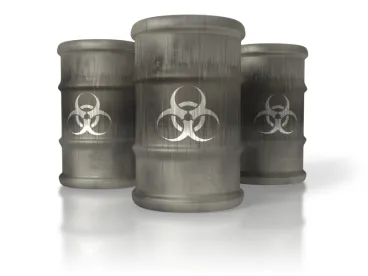On January 6, 2016, the Pennsylvania Department of Environmental Protection (DEP) issued a news release advising of the settlement of an enforcement action against the largest energy infrastructure company in North America which will result in the payment of a civil penalty totaling $745,000 for violations at two of the company’s facilities near Philadelphia. Notably, the enforcement action included a penalty of $175,000 for mere inattention without any reportable release or discernible harm to the environment. For companies that would prefer to avoid the sting of a hefty penalty action, it might be useful to consider how a company with similar facilities or operations could take proactive steps to remain compliant.
DEP assessed a penalty for $570,000 to resolve violations arising from a release of 8,000 gallons of fuel grade ethanol from an above ground storage tank at the Kinder Morgan Liquids Terminal which impacted soil and groundwater due to a failed containment structure. The violations stem from the company’s failure to investigate a suspected release and notify downstream water users in a timely manner as required by the Pennsylvania Storage Tank and Spill Prevention Act.
DEP imposed a penalty of $175,000 to resolve violations related to excessive stormwater accumulations in emergency release containment structures at Kinder Morgan’s Point Breeze Terminal. Some may wonder how such a large fine can be justified absent some toxic release, fish kill or obvious harm to the environment. The answer may be that the terminal is situated adjacent to an exceptional value wetlands and the Delaware River. A catastrophic failure would not have been contained because the accumulated stormwater (which also posed a threat of corrosion to the tank) reduced the available containment.
How could this happen to a successful energy company in the modern era of comprehensive environmental regulation? The fact that Kinder Morgan acquired the Point Breeze Terminal in January 2015 may help explain what happened at this terminal. (see here for more information.)
In acquisitions, an acquiring company generally conducts due diligence to ascertain whether the target company or operation has all environmental permits and approvals in place. Further, the acquiring company will usually require the target to identify all pending and threatened claims. This should help identify environmental noncompliance. However, there is some risk that the target companies have experienced a lack of diligence or dedication prior to the acquisition including the departure of key personnel who may prefer to orchestrate their own career moves rather than wait to see what happens after an acquisition. So the facilities Kinder Morgan acquired may have had the necessary permits and authorizations including emergency response plans such as the Spill Prevention Response Plan, Spill Prevention Control and Countermeasure Plan and Preparedness, Prevention, and Contingency Plan. However, having all of this paperwork in place at the time of closing does not assure continuing compliance, particularly if there has not been a recent agency inspection that may disclose a violation or problem.
For terminals and tank farms and other facilities that are subject to emergency response planning, a critical feature of continuous compliance is a robust inspection, monitoring and preventive maintenance program. Indeed, DEP’s Guidelines for the Development and Implementation of Environmental Emergency Response Plans (Document ID 400-2200-001 April 2001) include a discussion of the need for inspection and monitoring, preventive maintenance and employee training to assure that emergency response plans will be effective.
While we do not have personal knowledge of the background leading to DEP’s enforcement action against Kinder Morgan, it may be that insufficient attention was made to determining whether the emergency response programs and plans were being followed as the Point Breeze Terminal changed ownership. Responsibility for environmental compliance may not have been effectively transferred after closing. There may have been a binder at each location describing the plans and procedures but did anyone confirm whether the plans were being implemented? Was there any training after the acquisition (or periodic training for the other facility)? Was there a discussion of the inspection procedures, frequency and documentation? What sort of transition planning took place? Were there any changes in environmental compliance responsibilities? When was the last agency inspection?
Reports like this one about major penalty actions can serve as learning opportunities for other companies to make sure that emergency response plans and procedures are not only in place but they are being followed, particularly in the context of a change of ownership or management responsibilities for the facilities. As many companies competing today in the energy and manufacturing industries know well, few can afford to pay hundreds of thousands of dollars in penalties to learn the hard way that merely having emergency response plans in a binder in a bookshelf will not assure continuing compliance.



 />i
/>i

